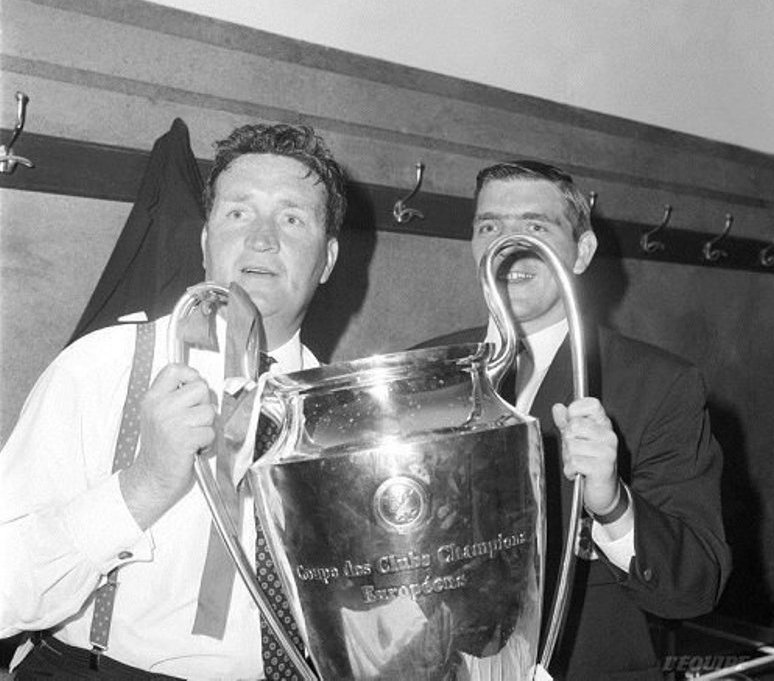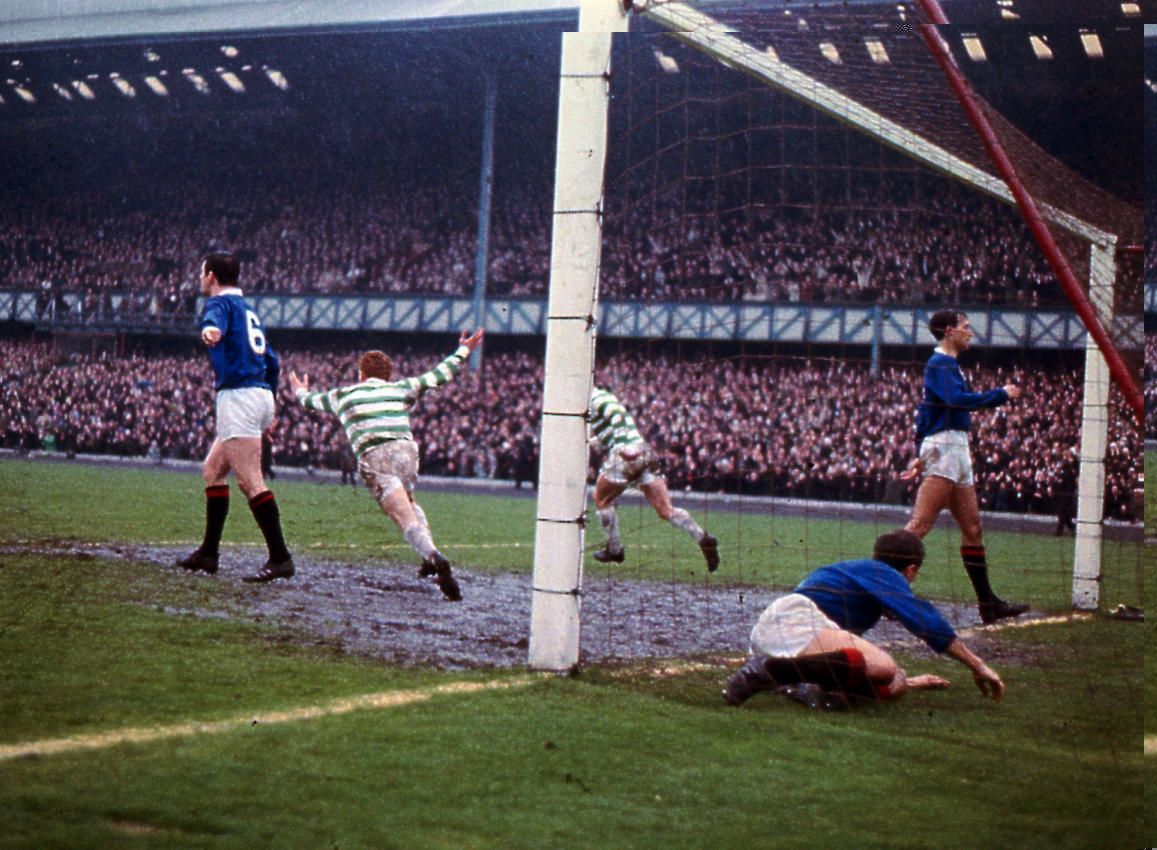CELTIC historian David Potter has been guiding us through the international break with these magnificently random Celtic stories every day and here are the latest seven…
1. IBROX
Oddly enough, this ground has not always been an unlucky ground for Celtic. The Empire Exhibiton Trophy was won there in 1938, the Scottish Cup in 1892, 1900, 1911, 1912, 1914 and the Scottish League Cup in 1997/98. There is also the surprising fact that in the two seasons that Celtic won every trophy they entered – 1908 and 1967 – they secured the League Championship at Ibrox.

2.NEIL MOCHAN
Neil Mochan made a remarkable and telling contribution to the fortunes of Celtic FC over a period of more than 30 years as a player and trainer. He was known as “Smiler” or the “Cannonball Kid” and was immensely popular with the fans, although a little less so with the Celtic establishment who tended to drop him from time to time, whimsically and for no apparent reason, particularly during the 1954/55 season when Mochan might well have made the difference between success and failure in Celtic’s attempt to win the Double for the second successive season.
He could play virtually anywhere in the forward line, although his best position was left winger. For a stocky individual he was surprisingly fast, and he had a magnificent left foot which brought many goals for the club, hence the “cannonball” nickname. He was not well liked by Chairman Bob Kelly, apparently because he was once fined in court for the mildly outrageous “crime” of not possessing a licence for his radio!
He had begun his career with Morton, but joined Celtic from Middlesbrough in spring 1953 and then went on to win a couple of medals for the club before he had even played a game at Celtic Park. These were the Glasgow Charity Cup and the Coronation Cup – and he scored in both finals!
Success then followed in the shape of a League and Cup double in 1954 and Scotland recognition, but he cannot have enjoyed the 1954 World Cup Finals in Switzerland which included a 0-7 defeat by Uruguay in which Mochan would recall that the advice given to the team consisted of little more than “get stuck in”!

He played in the side that won Celtic’s first ever Scottish League Cup in October 1956, but was immortalised by the League Cup final of the following year in which he scored twice in the 7-1 beating of Rangers.
He flirted with a defensive role for a spell before returning to the forward line and on one famous occasion, scoring all five goals that Celtic put past St. Mirren in a replayed cup tie in February 1960.

Later that year, he was off on his travels to Dundee United and later Raith Rovers, but on giving up the playing side, he was appointed trainer at Celtic Park in 1964. His influence was already strong, but when Stein came a year later, Mochan was the man who made the young Celtic team the fittest and fastest in football. He stayed as trainer/coach until 1991 when he was appointed kit manager. He died of leukaemia in Falkirk in 1994.
3. WALK OUT
It was the dreadful night of 15 May 1963 when 50,000 almost of one accord literally turned their backs on Celtic (not to do the huddle as they do in more modern and happier times) and walked out of Hampden. This was to express their disgust at what they were seeing after Rangers scored their third goal in the Scottish Cup replay.

4. BOBBY MURDOCH – DIFFERENT CLASS
If one was ever asked to name the best player of the Lisbon Lions team, it would be difficult not to come up with the name of Bobby Murdoch. Certainly his opponents from Helenio Herrera downwards thought so, for he was the powerhouse of the team from whom everything flowed. His relentless energy, visionary passing ability, sheer power and ball winning earned him the adjective “world class”.

Disaster struck the club with a Scottish Cup final replay defeat to Rangers after Murdoch had scored an equalizer in the first game.
Discerning supporters saw that he would be a better midfield man than a forward, and it was Jock Stein who made this change in 1965, after which the team simply took off to reach dizzy and scarcely believable heights of Scottish and European domination with Murdoch the mainstay of a team which was not short of stars.

Trophies which had eluded Murdoch and Celtic before 1965 suddenly became regular visitors to Celtic Park.
Bobby was never at his best when playing for Scotland, and this was a shame for Murdoch at his best might even have won a World Cup for Scotland. As it was he was favourably compared with the great Celtic right halves of history – and there has been no shortage of them, like Peter Wilson, Bobby Evans and Jimmy Young, and no less a man than Jimmy McGrory thought he was the best of them all.
Yet Murdoch had his problems. He very nearly missed Lisbon with an ankle problem (a problem which would stay with him all his life) and he had a recurring problem with his weight, causing Jock Stein on two occasions to send him to a health farm for special treatment. Stein would not have done this for a lesser man.

In 1973 he moved on to Middlesbrough. Some thought that Stein moved him on when he still had something to offer Celtic, but in the north-east of England, he became a hero for the sadly under-performing Teeside outfit, working well with Jack Charlton and playing an influential part in the development of the young Graeme Souness before himself becoming their coach and manager.
He was sacked by Boro in 1982 and returned to Glasgow. Sadly health problems plagued him all the rest of his life, but he remained the humble and lovable Bobby Murdoch. When one met him, one would never have thought that he was one of the greatest players ever to grace the earth.
5.SCAPULARS
What are scapulars? They are mini-shoulder pads often worn by members of a religious order. In the case of Willie Kivlichan, he was a member of the Third Order of St Francis and scapulars were required even when playing football.

On 1 October 1910, Kivlichan was playing for Celtic against Queen’s Park at Hampden and his scapulars escaped from beneath his green and white jersey and were clearly seen by the crowd. According to the devoutly Catholic Glasgow Observer this sight “brought tears of joy to the eyes of the Parkhead faithful” – a touch of exaggeration here, one feels, and as Kivlichan previously played for Rangers, one wonders what the reaction might have been there.
6. WILL YOU NO COME BACK AGAIN?
26 March 1926 at Ibrox witnessed an amazing sight at the Scottish Cup semi-final between Celtic and Falkirk. It is not uncommon for ex-Celts to be heartily booed by the fans that used to loved them. Dalglish and Nicholas, for example, were left in no doubt that “furthering their career” cut little ice with the Celtic faithful, but in 1927 Falkirk had Patsy Gallacher, generally believed to be the greatest player of his era and by some to be the greatest Celt of all time.

It was felt that Celtic had allowed him to leave too early, and when, before this game, an attempt was made at Community Singing by the conductor of the Govan Instrumental Band, the selections included the Jacobite anthem “Will you no’ come back again?” The words could hardly have been more appropriate to Celtic supporters’ feelings about Patsy, and the song was sung with gusto and indeed continued all game with Patsy cheered to the echo every time he touched the ball. He played brilliantly, enjoying the bizarre appreciation of the opposition support, but Celtic won 1-0 thanks to an Adam McLean goal.
7. HIBERNIAN
Difficult to describe supporters’ feelings about this club! If you are one of those supporters who thinks that Celtic are right to be paranoid and that everyone is out to get them for reasons of their religion and ethnic origin, you cannot really include Hibs in all that!
In some ways, Celtic sprung out of Hibs and have certainly stolen quite a few good players (and managers – Jock Stein, Neil Lennon) from them over the years beginning from the 1890s, so one really must feel a certain amount of sympathy for their supporters who have suffered more than most from supine and pusillanimous Hibs Directors who would sell anything that moved.
But why on earth did they support the SFA in trying to get the Irish flag removed from Celtic Park in 1952?

Fortunately, Celtic were backed by their staunchest and most loyal ally – er, yes, Rangers! And then there was the inexplicable decision not to allow TV cameras to watch Celtic winning the League at Easter Road in 1977.
Spite? Looks like it!
David Potter



